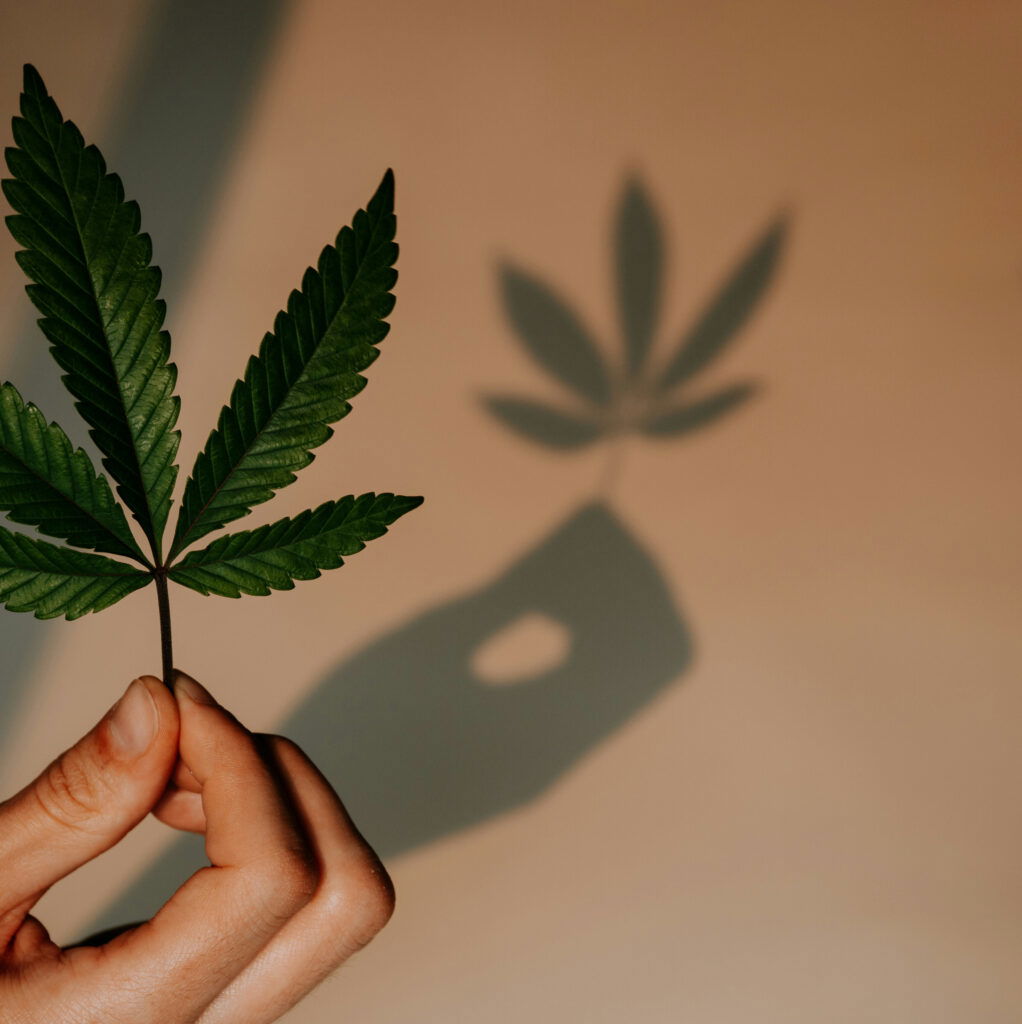Different Decade, Different Drug – What Parents Need to Know About Cannabis in 2024

By Katie Greeley
Over the past several decades, the public perception of the risks associated with cannabis has seen a marked decline. This shift is largely due to the increased legalisation for adult use, the recognition of cannabis’s medicinal uses, and the development of a wide array of cannabis products, from edibles like chocolates and gummies to tinctures. In major cities, some restaurants have even begun to offer a complete “cannabis experience,” serving guests multi-course meals infused with cannabis, underscoring just how significantly the world of weed has transformed.
For parents today, especially those with teenagers, it’s crucial to understand that despite these changing social norms and the decreased perception of risk, the reality of cannabis use has shifted dramatically. This evolution isn’t just about the legal status or the wide variety of products available; it’s about the fundamental changes in the potency and composition of cannabis– and the volume of misinformation that young people must navigate. With legalisation, the growing cannabis industry, and widespread commercial availability, a significant increase in potency of the psychoactive ingredient in cannabis, tetrahydrocannabinol (THC), means more risks to users than ever before.
The Evolution of Cannabis
To truly capture how cannabis has changed more in the past 30 years compared to the thousands of years the plant has existed, let’s dive into the evolution of cannabis.
Cannabis often evokes images of the 1960s and 1970s counterculture, symbolised by landmarks such as the Woodstock Music Festival and the Vietnam War. It was a period when the cannabis plant was widely regarded as “all-natural.” During those decades, THC levels, the psychoactive component in cannabis, hovered at only 1%—by today’s standards, decidedly less potent.
Throughout the 1980s and 1990s, THC levels modestly increased, ranging from 3-5%. The 1990s, in particular, saw a symbiosis between pop culture with music icons like Nirvana increasingly embracing and integrating cannabis culture into its identity.
This period turned cannabis from a countercultural symbol to a mainstream and horticultural product. This shift was underscored in 1996 when California led the way in legalising cannabis for medical purposes, signifying a new era in cannabis cultivation. By the decade’s close, the average THC content in cannabis plants had risen to approximately 5%.
The trend of increasing potency continued into the 2000s and 2010s, with THC levels nearly doubling from 5% to 10% between 2000 and 2010. This surge can be attributed to a deeper scientific understanding of the plant and advancements in cultivation techniques, marking a new chapter in the history of cannabis.
But 2014, was the year that changed the cannabis plant and the global supply chain of the drug forever. Over a decade later in 2024, one thing is for certain — cannabis available is not your grandpa’s Woodstock weed.

The Green Rush
In 2014, Colorado made history by becoming the first state in the United States to legalise cannabis use for adults over the age of 21. This landmark decision altered public perception of the safety of cannabis use and initiated a significant transformation in the cannabis industry, particularly concerning THC potency.
Heralded as “The Green Rush,” the period after 2014 was characterised by intense competition within the cannabis market. Legalisation in Colorado effectively sanctioned a burgeoning billion-dollar industry, and the main metric of cannabis quality, and in turn price, became its potency, primarily measured by the THC content. The message was clear: the higher THC level, the higher the quality of the cannabis, and the greater its potential market price.
Investment surged into the cannabis industry, channelling funds into advanced horticultural techniques and the innovation of new products such as edibles, THC oil, and THC wax. This influx of capital also financed marketing campaigns with budgets rivalling those of major alcohol and tobacco corporations.
In 2014, Colorado’s cannabis industry generated $680 million in revenue. By 2022, this figure had escalated to $1.1 billion annually from sales within the state of Colorado alone. Furthermore, from the time cannabis was legalised in Colorado in 2014 up until September 2023, the total revenue reached an astounding $15 billion.
So what product are available to young people today, and how risky is cannabis actually?
Modern-Day Cannabis
The cannabis industry has diversified its offerings, introducing a range of new cannabis products available due to newer horticultural and laboratory techniques.
The most recognisable form of cannabis, the cannabis flower, is characterised by its symbolic leaf. It is primarily cultivated for its flowers—green, often sticky, and fragrant buds rich in cannabinoids like THC and CBD. This form of cannabis, perceived as “all-natural,” is what many readily identify.
However, the notion that the cannabis flower remains a purely natural product is misleading today. Advances in genetic modification have significantly boosted THC potency, from about 1% in the ‘60s and ‘70s to levels that can reach up to 38% in today’s most potent strains.
Edible products are increasingly popular, and this method of consumption has increased since the widespread legalisation of cannabis. Ranging from gummies and chocolates to mints, edibles offer a variety of choices. It’s essential to distinguish between the effects of ingesting THC through edibles and inhaling it, as the body processes these forms differently, presenting unique risks that warrant further discussion. When inhaled the psychoactive effects can occur within 1-3 minutes, when eaten, cannabis can take anywhere from 30- 90 minutes for individuals to feel the effects.
Edibles have not only captivated a younger demographic with cleverly named products that look like popular candy brands like “Stoney Patch Kids” but also appeal to those seeking a more discreet and convenient consumption method.
Vaping THC oil is also becoming a preferred method of cannabis consumption by teenagers. THC oil, a concentrated extract from the cannabis flower, is available in cartridges called “carts” by young people or available in disposable pre-filled vaporizers or “vapes.” Its potency far exceeds that of traditional smoking methods, contributing to the rising preference for vaping THC among young adults, a trend with significant implications for their health and well-being. THC potency can range from anywhere between 20-90% THC.
Cannabis concentrates, the most recent form of the substance, have become more accessible post-legalisation. These products, resembling ear wax in appearance and known as wax, shatter, or dabs, are created by extracting THC with chemicals to produce extremely potent concentrates. With THC levels that can soar to 99%, concentrates deliver a powerful and rapid effect, posing a heightened risk of overdose for those with low THC tolerance.

The Risks
High-potency cannabis, defined as containing over 20% THC or more than 10 mg of THC per serving, is the new normal. This shift towards stronger cannabis products raises significant questions about its impact and risk, particularly for parents of teenagers.
Cannabis has emerged as the leading cause for substance-related treatment among young people in the United States, with teenagers being particularly susceptible to addiction due to their developing brains. Contrary to the longstanding myth that cannabis is non-addictive, recent findings highlight the tangible mental health risks associated with high-potency cannabis use.
These include:
• A notable rise in addiction rates is evidenced by a 76% increase in individuals seeking treatment for cannabis use disorder in Europe.
• An increased likelihood of experiencing anxiety and depression later in life.
• A heightened risk of developing schizophrenia, particularly for those with a familial history of psychotic disorders.
• More pronounced withdrawal symptoms such as mood and sleep disturbances associated with the cessation of high-potency cannabis use.
Ongoing research continues to investigate the long-term effects of cannabis use on memory and cognitive functions, indicating that our understanding of these effects is still evolving. However, the impact of cannabis on the developing adolescent brain is well-known among addiction experts.
Among the notable impacts of high-potency cannabis on teenagers are a range of concerning symptoms and potential long-term consequences. One such emerging condition is cannabis hyperemesis syndrome, characterised by episodes of uncontrollable vomiting as a result of continued long-time use of the drug. Additionally, the risk of addiction escalates with the frequent use of high-potency cannabis, which can also precipitate episodes of psychosis. Such episodes have the potential to evolve into lifelong psychiatric conditions.
Studies also indicate changes in brain anatomy and connectivity, alongside impairments in memory, as potential outcomes of regular high-potency cannabis use. Furthermore, there’s an increased likelihood of teenagers developing depression and experiencing suicidal thoughts.
These findings underscore the importance for parents to be well-informed about the evolving nature of cannabis and its amplified risks, particularly in guiding their teenagers through formative brain development years.
What Parents Can Do
As cannabis becomes more potent and its legal status changes, parents play a key role in guiding their teenagers. Keeping up with the latest cannabis research and facts about the substance is crucial. If think your child is exposed to misinformation about cannabis, sit down with them and model media literacy by referencing reputable sources of information such as your country’s health ministry website, where you will be able to access the latest information on cannabis addiction rates, hospitalisations, and more. Other excellent resources include the National Institute on Drug Abuse (NIDA) or Substance Abuse and Mental Health Services Administration.
Clear rules about cannabis use at home are essential. Parents need to be clear about what is the rules are and what the consequences of breaking these rules. Since stress often leads young people to try substances like alcohol and cannabis parents need to model healthy ways to deal with stress and encourage their teenagers to communicate any mental health concerns.
Explaining the importance of delaying the use of alcohol and other drugs is crucial, especially since the teenage brain is still developing and is more vulnerable to their harmful effects. By encouraging open conversations, correcting misinformation, and providing accurate information, parents can help their teenagers make informed decisions about cannabis. This not only protects the well-being of young people but also leads to a healthier, more knowledgeable generation ready to face the complex and evolving landscape of cannabis and other drugs.

